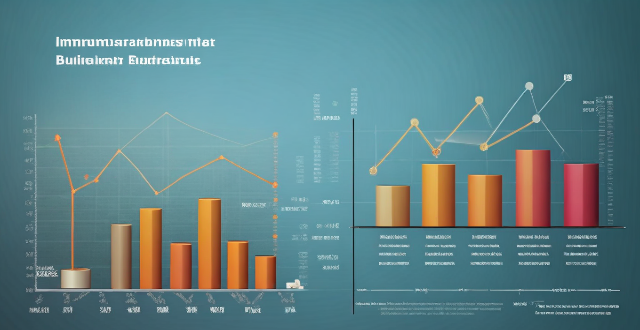Individual Calculator

What is a carbon footprint calculator and how does it work ?
A carbon footprint calculator is a tool that helps individuals, businesses, and organizations estimate their greenhouse gas emissions. It calculates the amount of CO2 and other greenhouse gases released into the atmosphere due to various activities such as driving, flying, using electricity, and consuming goods and services. The calculator collects data on these activities, applies emission factors based on scientific studies, adds up the emissions, and presents results along with recommendations for reducing the carbon footprint. Examples of carbon footprint calculators include individual, business, and product calculators. Using these tools can help individuals and organizations understand their environmental impact and take action to reduce it.

Why is it important to use a carbon footprint calculator for individuals and businesses ?
The importance of using a carbon footprint calculator is highlighted for individuals and businesses. For individuals, it helps in understanding personal impact, raising awareness, motivating behavior change, setting goals, and contributing to global efforts. For businesses, it aids in corporate responsibility, cost savings, compliance and reporting, enhancing brand image, stakeholder engagement, risk management, and innovation. Using a calculator empowers both to make informed decisions for a sustainable future.

Are there any drawbacks or limitations to using a carbon footprint calculator ?
The text discusses the drawbacks and limitations of using carbon footprint calculators. These include issues with data accuracy, scope of coverage, user bias, lack of personalization, generalization, complexity, motivation, and cost. While these calculators can be helpful in reducing environmental impact, it is important to recognize their limitations and make informed decisions about their use.

How accurate are the results from a carbon footprint calculator ?
The accuracy of carbon footprint calculators can vary based on data sources, scope of calculation, user input, and methodology. Limitations include generalizations and lack of standardization. Despite these limitations, using reputable sources and understanding the scope can help users interpret results accurately. The goal is to raise awareness and encourage reductions in carbon emissions.

How can I find a reliable carbon footprint calculator online ?
Finding a reliable carbon footprint calculator online can be a daunting task, but with the right approach, you can easily find one that suits your needs. Here are some tips on how to do it: 1. Do your research 2. Check credibility 3. Look for transparency 4. Consider customization options 5. Evaluate usability

Can using a carbon footprint calculator help reduce my environmental impact ?
Using a carbon footprint calculator can help individuals reduce their environmental impact by raising awareness, identifying areas for improvement, setting goals, tracking progress, and encouraging sustainable habits.

How often should I use a carbon footprint calculator to track my progress ?
The article discusses the importance of tracking one's carbon footprint and how a carbon footprint calculator can be used to measure progress in reducing it. It suggests starting with an initial assessment, then checking monthly for changes, quarterly reviews for trends, and annual reassessments to evaluate overall progress. Key areas to focus on include transportation, energy consumption, dietary choices, and waste management. Regular use of a carbon footprint calculator is essential for leading a more sustainable life.

How can I apply the insights from a carbon footprint calculator to make more sustainable choices in my daily life ?
The text provides a comprehensive guide on how to apply the insights from a carbon footprint calculator to adopt more sustainable living practices. It covers various aspects of daily life including transportation, housing, food consumption, shopping habits, and water conservation. For each category, the text offers specific strategies such as reducing car use, improving energy efficiency in housing, incorporating plant-based meals, choosing sustainable goods, and conserving water. The overarching message is that by making informed choices based on one's carbon footprint data, individuals can significantly reduce their environmental impact and contribute to a more sustainable lifestyle.

Can team sports contribute to mental rejuvenation more than individual sports ?
Team sports may contribute more to mental rejuvenation than individual sports due to increased social interaction, motivation, and sense of belonging. However, individual preferences vary, and some people may find greater mental rejuvenation through individual sports or other activities that bring them joy and fulfillment.

How can team sports help in individual skill development ?
Team sports contribute significantly to individual skill development by improving communication skills, enhancing leadership abilities, increasing self-confidence, bettering time management, improving social skills, promoting physical fitness and coordination, providing opportunities to learn from mistakes, and fostering adaptability.

How does team sports impact mental health compared to individual sports ?
This article explores how team sports impact mental health compared to individual sports. It highlights the social support and belongingness provided by team sports, which can reduce feelings of isolation and loneliness. The article also discusses how team sports promote accountability and responsibility, helping individuals develop discipline and self-control. Additionally, it emphasizes the importance of goal setting and achievement in team sports, which can boost self-esteem and confidence. Overall, the article concludes that team sports have a significant impact on mental health compared to individual sports due to their social aspect.

How do individual versus team sports impact self-esteem in young people ?
The text discusses the impact of individual versus team sports on self-esteem in young people. It outlines key points such as the focus on personal growth and discipline in individual sports, and the social support and collaboration learned in team sports. The benefits of each type of sport are also highlighted, including increased autonomy and clear feedback from individual sports, and social skills development and resilience from team sports. A comparative analysis is provided, discussing the pros and cons of each type of sport in relation to self-esteem. The conclusion suggests that both types of sports can positively impact self-esteem, but finding the right fit for each individual is crucial.

Is there a difference in mental health benefits between individual and group exercises ?
Exercise plays a vital role in maintaining good mental health, with both individual and group exercises offering unique benefits. Individual exercises provide flexibility, focus, and personal challenge, while group exercises offer social support, motivation, and accountability. Both types of exercise have been shown to reduce stress, anxiety, and depression while improving mood, self-esteem, and cognitive function. Ultimately, finding an activity that you enjoy and can consistently incorporate into your lifestyle is key to maintaining good mental health through exercise.

How do individual versus team sports differ in their impact on child development ?
Individual sports foster self-reliance and technical mastery, while team sports emphasize social skills and emotional intelligence. Both have unique benefits for child development, and the choice should consider the child's personality and desired skill development. A combination of both might provide the most well-rounded experience.

How do the principles of sports biomechanics differ between individual and team sports ?
This text discusses the principles of sports biomechanics in individual and team sports. It highlights the differences in kinematics, kinetics, and coordination between the two types of sports. In individual sports, there is a focus on precision, technique optimization, and personal performance, while team sports emphasize strategic interactions, group coordination, and adaptability to complex game situations. The text concludes by emphasizing the importance of understanding these distinctions for coaches and athletes to tailor their training approaches to best suit the specific demands of their chosen sport.

How is individual income tax calculated ?
Individual income tax calculation involves determining gross income, subtracting allowable deductions, calculating adjusted gross income (AGI), identifying tax credits, calculating taxable income, applying tax rates, and considering withholding and estimated tax payments. The process varies slightly by jurisdiction but generally follows these key steps. It is recommended to consult with a tax professional or use reliable tax preparation software to ensure accuracy and maximize any applicable deductions and credits.

How can individuals participate in a carbon credit system ?
Carbon credit systems enable individuals to participate in reducing greenhouse gas emissions by buying, selling, or supporting carbon offsets. Individuals can offset their own carbon footprint by purchasing credits from verified projects, sell credits generated from their sustainable projects, or support the growth of carbon credit initiatives through advocacy and investment. Participation in these systems is a significant step towards combating climate change and fostering a more sustainable environment.

How can I calculate my personal carbon footprint ?
This article provides a detailed guide on how to calculate your personal carbon footprint, which is the total amount of greenhouse gases released into the atmosphere as a result of your activities. It explains what a carbon footprint is, the importance of calculating it, and the steps involved in doing so. The steps include gathering information about your lifestyle habits, using online carbon footprint calculators, breaking down your emissions by category, identifying areas for improvement, setting goals, and tracking progress. The article emphasizes that taking action to reduce your carbon footprint is crucial for a healthier planet.

Are there any secret codes or shortcuts to unlock hidden functionality in iOS ?
The text lists several secret codes and shortcuts for iOS devices that can help users unlock hidden functionality. These include accessibility shortcuts such as Guided Access, Switch Control, and AssistiveTouch; Field Test Mode for detailed cellular connection information; a hidden trackpad feature on the keyboard; a calculator trick for deleting wrong numbers; Quick Search for finding apps, contacts, and more; and a camera shutter button hack for taking multiple photos quickly.

Can data analytics be used to personalize learning experiences for individual students ?
Data analytics is a powerful tool that can be used to personalize learning experiences for individual students by collecting data related to student performance, preferences and behaviors. This allows educators to tailor instruction to meet the unique needs of each learner. Data analytics can improve student outcomes, provide tailored instructional approaches, and use resources more efficiently. It can also identify student needs, design personalized learning plans and enhance teaching practices. By leveraging the power of data analytics, educators can better understand their students' needs, design effective learning plans, and enhance their teaching practices to promote improved outcomes for all learners.

What are some resources available to help me with education budget planning ?
Education budget planning is crucial for managing finances and ensuring sufficient funds for educational expenses. Various resources are available to assist in this process, including government websites, college websites, scholarship search engines, financial aid consultants, online tools, and personal finance apps. These resources provide information on financial aid, scholarships, grants, loans, tuition fees, payment plans, and personalized guidance for securing funding. By utilizing these resources, individuals can effectively plan their education budget and achieve their academic goals.

Can individual actions significantly contribute to addressing climate change from an ethical standpoint ?
From an ethical standpoint, individual actions can significantly contribute to addressing climate change. This is because every individual has a responsibility to take care of the environment and protect it for future generations. Here are some ways in which individual actions can make a difference: - Reducing Carbon Footprint: One of the most effective ways to address climate change is by reducing our carbon footprint. This can be done by making small changes in our daily lives, such as using public transportation or carpooling instead of driving alone, turning off lights and electronics when not in use, eating less meat and more plant-based foods, and buying products with less packaging and recycling whenever possible. By making these changes, we can reduce our carbon emissions and help slow down the effects of climate change. - Supporting Renewable Energy: Another way individuals can contribute to addressing climate change is by supporting renewable energy sources. This can be done by installing solar panels or wind turbines on your property (if feasible), switching to a green energy provider that uses renewable energy sources, and encouraging your local government to invest in renewable energy projects. By supporting renewable energy, we can reduce our reliance on fossil fuels and help transition to a cleaner, more sustainable energy system. - Educating Others: Finally, one of the most important things individuals can do to address climate change is to educate others about its severity and urgency. This can be done by sharing information about climate change with friends and family, attending protests or rallies to raise awareness about the issue, and writing letters to elected officials urging them to take action on climate change. By educating others, we can spread awareness about the issue and encourage more people to take action to address it.

How can individual athletes contribute to environmental conservation efforts through their lifestyle choices ?
Individual athletes can contribute to environmental conservation through eco-friendly habits and sustainable practices, such as reducing energy consumption, making conscious transportation choices, adopting a sustainable diet, conserving water, reducing waste, and engaging in advocacy and education. These actions not only help the planet but also inspire others to follow their lead, creating a ripple effect of positive change for the environment.

What is the role of individuals in addressing climate change and environmental degradation ?
This article discusses the role of individuals in combating climate change and environmental degradation. It highlights the cumulative impact of individual actions, their potential to inspire others, and the political pressure they can exert. The article provides practical steps individuals can take, such as reducing their carbon footprint, supporting renewable energy, waste reduction and recycling, advocating for environmental policies, and spreading awareness. It emphasizes that collective efforts can make a significant difference in creating a more sustainable future for our planet.

What benefits can individual athletes gain from tracking and analyzing their performance data ?
Individual athletes can gain numerous benefits from tracking and analyzing their performance data, including improved performance, increased motivation, greater self-awareness, better injury prevention, and more effective recovery strategies. By monitoring their progress, identifying areas for improvement, and making data-driven decisions about their training and competition strategies, athletes can enhance their overall performance and achieve better results.

What are the benefits of immigrant integration for both the individual and the host country ?
Immigrant integration is crucial for both the individual and the host country, offering benefits such as cultural exchange, economic opportunities, social support, diversity and inclusion, population growth and aging, and improved international relations. By embracing immigrant integration, we can create a more harmonious and prosperous society for all.

What are some common mistakes people make when creating a fitness meal plan ?
When creating a fitness meal plan, it's important to avoid common mistakes such as neglecting macronutrient distribution, ignoring micronutrient needs, underestimating calorie needs, overcomplicating meal preparation, and neglecting hydration. To ensure success in achieving health and fitness goals, prioritize balance, simplicity, and sustainability while focusing on meeting individual nutritional needs.

Is there a standard size for protective clothing, or can it be customized for individual needs ?
The topic of this text is protective clothing, focusingThe topic of this text is protective clothing, focusing there is a standard size for focusing on the question of whether there is a standard size for such garments or if they can be customized to meet individual needs. The text explores the advantages and disadvantages of both standard sizes and customization options in terms of consistency, cost-effectiveness, ease of use, fit, accommodation for unique requirements, performance, availability, and production time. It concludes that while standard sizes offer consistency and affordability, customization allows for a tailored fit that prioritizes comfort and protection but comes at a higher cost and longer production time. The choice between standard sizes and customization depends on factors such as job requirements, budget constraints, and personal preferences.

Can listening to music help or hinder concentration ?
Listening to music can both help and hinder concentration, depending on factors such as the type of music, individual preferences, and the task at hand. Positive effects include increased motivation, improved mood, reduced stress, and enhanced creativity. Negative effects may include distractions, cognitive overload, emotional responses, and individual differences in musical preferences. To optimize the use of music while working or studying, consider choosing the right genre, adjusting volume, taking breaks, personalizing playlists, and experimenting with different types of music.

Can team sports or group exercises provide additional cognitive benefits compared to individual activities ?
Team sports and group exercises provide cognitive benefits such as improved social skills, enhanced cognitive functioning, increased self-esteem and confidence, and personal growth opportunities. Participating in these activities helps individuals develop strong communication skills, cooperation, conflict resolution abilities, attention and focus, decision making skills, memory retention, and a sense of achievement. These skills can be applied in all aspects of life, leading to personal growth and development.